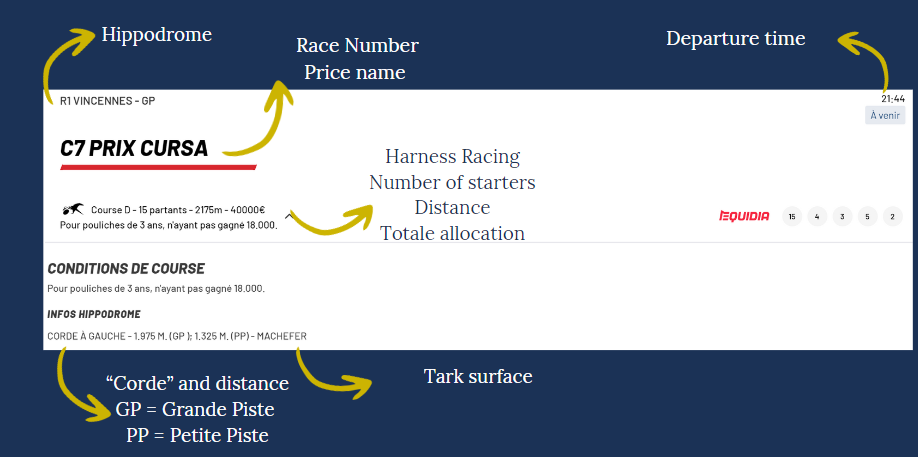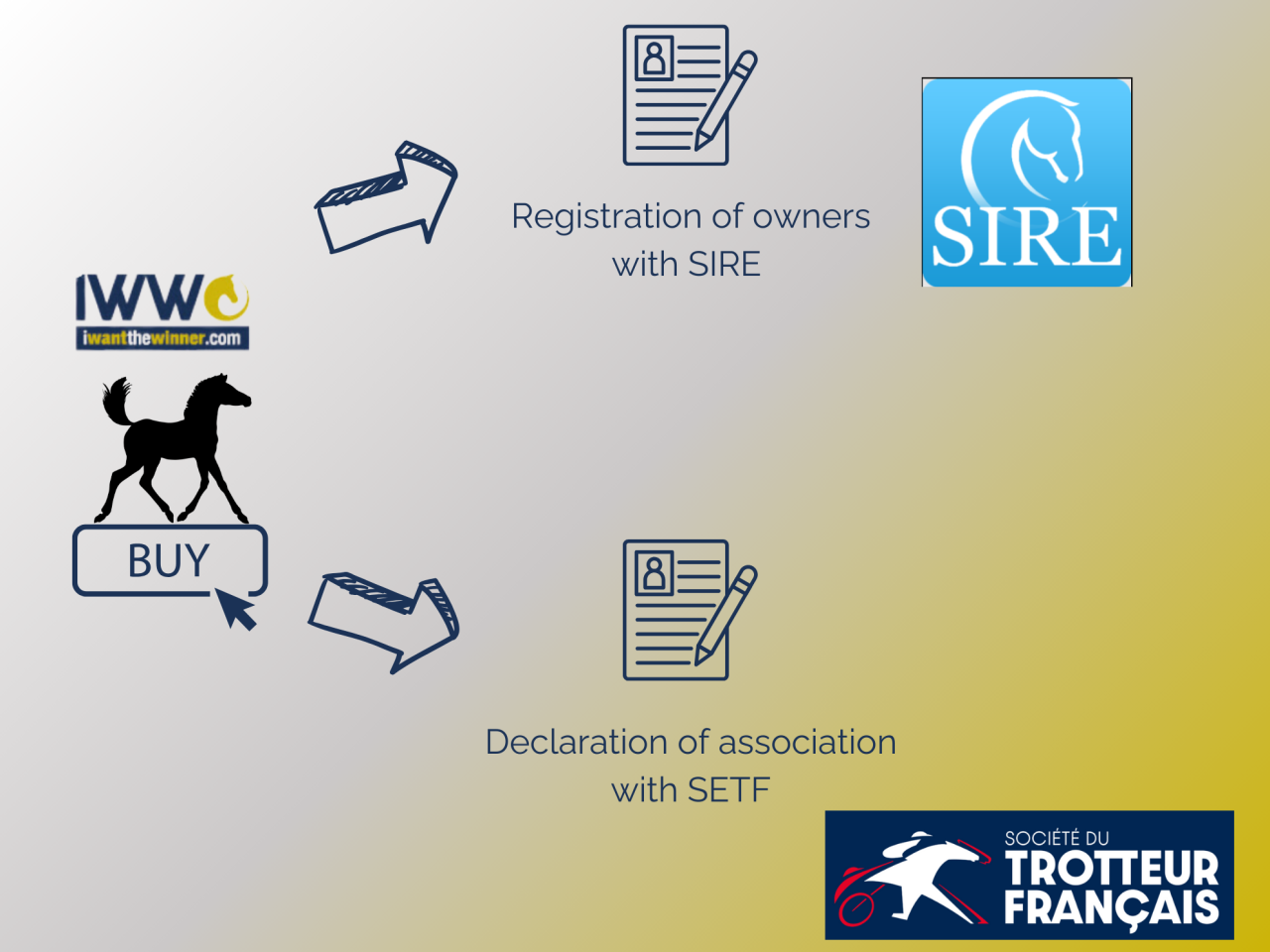The races
Like in every fields, the world of racing uses its won “lingo”, which can sometimes be difficult to understand when you’re just starting out. To help you understand everything, you will find in this section some of the frequently used terms and their explanations.
A foal is a colt (male or female) born in the current year. At midnight on Decelber 31st, all foals turn one year old and are then called yearlings.
A yearling is a one-year-old colt (male or female). Trotters are then called colts or fillies until they are four years old.
To help you: the French Trotter studbook imposes the first letter of the colts’ names following the alphabet: O in 2024, P in 2025, Q in 2026…
Breaking-in is the technical term used to describe the initial training of a young horse.
Trotters are broken-in at around 18 months. During this phase, the colts are desensitized to accept the bridle, bit and harness.
Then, they are taught maneuverability (moving forward, stopping, turning right, left) using long reins. Finally, they are harnessed to a sulky called a “dresseuse”.
Breaking-in is an important step in the career of a future racehorse and lasts about 2 months.
Qualifications is the term used to describe to the “entrance exam” for trotters into the racing world.
During this test, trotters (at least 2 years old) must trot 200 meters within a given time. The timing criteria vary depending on the age of the horses and the discipline (harnessed or mounted).

The purpose of qualifications is the verify the horse’s behavior in “race conditions” and to select the horses that will compete on the racetracks.
Colts can start their racing careers at 2 years old (after being qualified). In France, trotters stop racing on March 31st of their 10th year, but few horses have careers that last 8 years.
During entries (a term used when registering a horse for a race), the trainer will be attentive to the race conditions.
The entries are carefully selected by the trainer who knows the predispositions of their horses.
Several criteria are taken into account:
- the horse’s age
- the gender (up to a certain age)
- the discipline (harnessed or ridden)
- the track (like us, they are right-handed or left-handed, although some are comfortable on both tracks)
- the distance (some will prefer short distances and others not)

The horse’s hoof is similar to your hand, except that all four fingers are contained within the hoof, which is protected by a horn-like material.
Horseshoes are used to protect the hoof from wear. There are many types of horseshoes specifically adapted to the needs of each horse. While the horseshoe limits hoof wear, its weight (which varies depending on the models) still has to be lifted by the horse with each movement.
When a horse is unshod, it is lightened in its movement. This practice of unshoeing is regulated by the SETF and used sparingly by professionals, as we say in France: “No hoof, no horse” or “Good feet, good eyes!”
Article source "Le Trot"

Males can be gelded for several reasons:
- For medical reasons, it can happen that the testicular cords are too short and cause discomfort to the horse.
- For practical reasons, a horse with a “light” pedigree or limited athletic predispositions has no chance of becoming a stallion; in this case, it is preferable to geld him. He can then live with other geldings (castrated males) or mares.
- For psychological reasons, some entire horses (non-castrated males) are not focused on their work and can even become aggressive; in such cases, it is better to geld them for everyone’s well-being.
You will find informations in this video:
The breeder of the foal is generally the owner of the mare and is declared as the breeder when the birth is registered with the IFCE (Institut Français du Cheval et de l’Equitation). The breeder retains their “title” for the entire life of the horse, even if the horse is sold.
In general, breeders sell their foals around 18 months old. These sales allow them to secure income and thus cover the expenses related to breeding.
The SETF (Société d’Encouragement du Trotteur Français) has implemented a breeder valuation through the breeding premium. The breeder receives for life, in the form of premiums, 12,5% of the amount of the prize money earned by the horse they bred, in races held in France.
In 2023, the total amount of premiums distributed amounted to 30 millions euros.
The co-ownership investment system implemented by IWW allows breeders to retain a portion of the horse in ownership in 10%.
You might be partnered with the breeder of your foal because, like you, they believe in this future champion !

